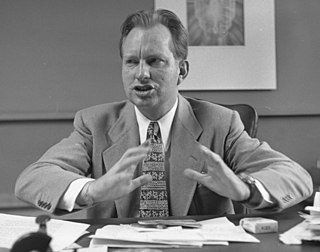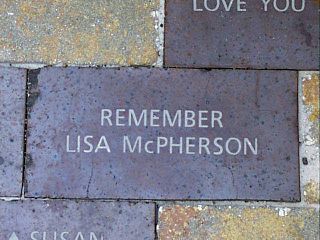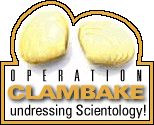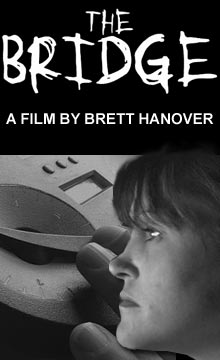Xenu, also called Xemu, is a figure in the Church of Scientology's secret "Advanced Technology", a sacred and esoteric teaching. According to the "Technology", Xenu was the extraterrestrial ruler of a "Galactic Confederacy" who brought billions of his people to Earth in DC-8-like spacecraft 75 million years ago, stacked them around volcanoes, and killed them with hydrogen bombs. Official Scientology scriptures hold that the thetans of these aliens adhere to humans, causing spiritual harm.

There are a number of disputes concerning the Church of Scientology's attempts to suppress material critical of Scientology and the organization on the Internet, utilizing various methods – primarily lawsuits and legal threats, as well as front organizations. In late 1994, the organization began using various legal tactics to stop distribution of unpublished documents written by L. Ron Hubbard. The organization has often been accused of barratry through the filing of SLAPP suits. The organization's response is that its litigious nature is solely to protect its copyrighted works and the unpublished status of certain documents.
The Fishman Affidavit is a set of court documents submitted by self-professed ex-Scientologist Steven Fishman in 1993 in the federal case, Church of Scientology International v. Fishman and Geertz (Case No. CV 91-6426.
Revolt in the Stars is a science fiction film screenplay written by Scientology founder L. Ron Hubbard in 1977. It tells the space opera story of how an evil galactic dictator, named Xenu, massacres many of his subjects by transporting them to Earth and killing them with atomic bombs. L. Ron Hubbard had already presented this story to his followers, as a true account of events that happened 75 million years ago, in a secret level of Scientology scripture called Operating Thetan, Level III. The screenplay was promoted around Hollywood circles in 1979, but attempts at fundraising and obtaining financing fell through, and the film was never made. Unofficial copies circulate on the Internet.
Lawrence Dominick Wollersheim is an American former Scientologist. He has been an active director of several specialized non-profit organizations since 2002.

Scientology founder L. Ron Hubbard explicitly compared his teachings to the science-fiction subgenre space opera. In his writings, wherein thetans were reincarnated periodically over quadrillions of years, retaining memories of prior lives, to which Hubbard attributed complex narratives about life throughout the universe. The most controversial of these myths is the story of Xenu, to whom Hubbard attributed responsibility for many of the world's problems.
Scientology has been referenced in popular culture in many different forms of media including fiction, film, music, television and theatre. In the 1960s, author William S. Burroughs wrote about Scientology in both fictional short stories and non-fictional essays. The topic was dealt with more directly in his book, Ali's Smile/Naked Scientology. The 2000 film Battlefield Earth was an adaptation of a novel by L. Ron Hubbard.
The Office of Special Affairs (OSA), formerly the Guardian's Office, is a department of the Church of Scientology International. According to the Church, the OSA is responsible for directing legal affairs, public relations, pursuing investigations, publicizing the Church's "social betterment works," and "oversee[ing its] social reform programs". Some observers outside the Church have characterized the department as an intelligence agency, comparing it variously to the CIA or the KGB. The department has targeted critics of the Church with dead agent operations and character assassination.

Tory Christman is a prominent American critic of Scientology and former member of the organization. Originally brought up a Catholic, Christman turned to Scientology after being introduced to the book Dianetics: The Modern Science of Mental Health authored by Scientology founder L. Ron Hubbard while staying with her parents in Chicago. She identified with concepts described in the book including the idea of attaining the Scientology state of clear, and became a member of the organization in 1969. She hitchhiked from Chicago to Los Angeles, in order to begin the process of studying Scientology, and initially felt that it helped improve her life. In 1972, she joined the religious order within Scientology called the Sea Org. After being a member of the Scientology organization for ten years, Christman reached the spiritual Operating Thetan level of OT III, and learned the story of Xenu. She subsequently rose to a higher Operating Thetan level of OT VII, the second-highest within the organization. Her medical condition of epilepsy caused difficulty while in Scientology, as the organization did not approve of taking medication in order to manage her condition.

"Trapped in the Closet" is the twelfth episode in the ninth season of the American animated television series South Park. The 137th episode of the series overall, it originally aired on Comedy Central in the United States on November 16, 2005. In the episode, Stan joins Scientology in an attempt to find something "fun and free". After the discovery of his surprisingly high "thetan levels", he is recognized as the reincarnation of L. Ron Hubbard, the founder of the church. The episode was written and directed by series co-creator Trey Parker. The title is a reference to the R. Kelly serialized song of the same name and a satirized version of R. Kelly appears in the episode.
Moxon & Kobrin is a "captive" law firm of the Church of Scientology, meaning that it has no other clients apart from Scientology-affiliated entities. Its headquarters are located in Burbank, California. Wilshire Center Business Improvement District. Its members are: Kendrick Moxon, Helena Kobrin, and Ava Paquette.
According to Church of Scientology doctrine, Helatrobus was an "interplanetary nation", now extinct, which existed trillions of years ago.

Mark Bunker, is an American politician, broadcast journalist, videographer and documentary filmmaker. He won a Regional Emmy Award in 2006 from the Pacific Southwest Emmy Awards division of the National Academy of Television Arts and Sciences. He is the city councilman for Clearwater Florida's 2nd district.

The Lisa McPherson Trust was an organisation created in 1999 by Bob Minton. The trust was named after Lisa McPherson, a Scientology member who died in 1995 after being in the Church of Scientology’s care for 17 days. Their stated goal was to "expose the deceptive and abusive practices of Scientology and help those victimized by [the Church of Scientology]."
Scieno Sitter is content-control software that, when installed on a computer, blocks certain websites critical of Scientology from being viewed. The software was released by the Church of Scientology in 1998 for Church members using Windows 95. The term "Scieno Sitter" was coined by critics of Scientology who assert that the program is a form of Internet censorship.

Andreas Heldal-Lund is a Norwegian anti-Scientology activist best known for operating the website Operation Clambake.

Thomas William Davis is an American financial executive. From 2005 to 2011, Davis was head of external affairs and the chief spokesperson of the Church of Scientology International and Senior Vice President at the Church of Scientology Celebrity Centre International from the early 1990s. Between 2011 and 2013, Davis did not make any public appearances in the media. In June 2013, it was revealed that Davis and his wife had relocated from Gold Base in Riverside County, California to Austin, Texas. He currently resides in Los Angeles.
Jenna Miscavige Hill is an American former Scientologist. After leaving the Church of Scientology in 2005, she has become an outspoken critic of the organization. She had been a third-generation Scientologist, the granddaughter of Ron Miscavige Sr., the daughter of Elizabeth and Ron Miscavige Jr. and the niece of current Scientology leader David Miscavige. Her book Beyond Belief: My Secret Life Inside Scientology and My Harrowing Escape, recounting her experience growing up and living within the Scientology movement, was published by HarperCollins in 2013. She now runs a website which she co-founded with other ex-Scientologists which provides support and discussion for people either in the church or who have left.

Operation Clambake, also referred to by its domain name, xenu.net, is a website and Norway-based non-profit organization, launched in 1996, founded by Andreas Heldal-Lund, that publishes criticism of the Church of Scientology. It is owned and maintained by Andreas Heldal-Lund, who has stated that he supports the rights of all people to practice Scientology or any religion. Operation Clambake has referred to the Church of Scientology as "a vicious and dangerous cult that masquerades as a religion". The website includes texts of petitions, news articles, exposés, and primary source documents. The site has been ranked as high as the second spot in Google searches for the term "Scientology".
A series of incidents in 2009 led to Church of Scientology-owned networks being blocked from making edits to Wikipedia articles relating to Scientology. The Church of Scientology has long had a controversial history on the Internet and had initiated campaigns to manipulate material and remove information critical of itself from the web. From early in Wikipedia's history, conflict arose within the topic of Scientology on the website. Disputes began in earnest in 2005, with users disagreeing about whether or not to describe Scientology as an abusive cult or religion. By 2006, disagreements concerning the topic of Scientology on Wikipedia had grown more specific. Wikipedia user and Scientology critic David Gerard commented to The Daily Telegraph in 2006 that some articles were neutral due to a requirement to reference stated facts.









